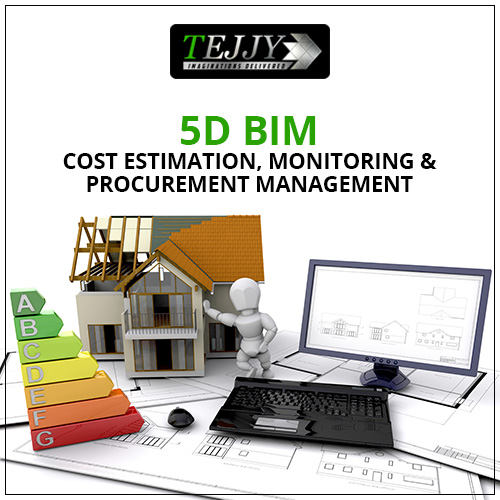4D and 5D BIM technologies are revolutionizing the construction industry. Governments in several countries across the globe have authorized BIM adoption for professionals in the Architectural, Engineering &Construction sector. Implementing the new BIM trend helps in an efficient deployment of resources, designing, planning, and decreasing rework during the construction process. 5D BIM technology comes next to 4D BIM time scheduling, integrating design with estimates like cost and encompassing the production of quantities (BOQ/BOM), rate of development and overall costs.The integrated information-rich 3D BIM models with additional dimensions of 4D scheduling and 5d cost estimation ensure improved management of change orders on project costs and scheduling. Integrating cloud technology with BIM facilitates stakeholders to access data from anywhere on any device.
Here are the top 5 benefits of availing 5D BIM technology for construction projects:
1. Improved Cost Estimate:Using 5D BIM technology, you can create the exact quantity of various components of buildings produced with a high level of detailing from the 3D BIM Models. The manufacturing details can be compared with the existing purchasing rates for estimating the entire cost of the building. To take an instance a significant project management company in Saudi Arabia required clash detection, quantity takeoffs, and scheduling during construction work. Information-rich Building Information Modeling (BIM) with LOD 500 as per AIA standards facilitated MEP, Architectural & Structural services using Revit & Navisworks software platforms, producing an accurate cost estimate and smoother construction operations.
2. Accurate Quantity Takeoffs: Usually, estimators spend around 50% to 80% time in generating quantity take off for cost estimate. The automated process helps to reduce human errors, by saving cost and time. Consequently, with more time on hands, estimators can emphasize other vital facets of the project like evaluating financial risks, detecting construction assemblies and generating pricing. More than 60% of the failures of the construction industry are often caused by economic factors, due to the shortage of liquidity in daily operations. The problem gets resolved by associating cost information to the conventional 3D model & scheduling, called 5D BIM. This facetlets the immediate creation of financial estimates against time, there by decreasing the time-consuming task of computing resources and evaluating specific costs while reducing errors.
3. Programmed Quantity Extraction as per Design Changes: While a single constituent is altered, the direct impact on the cost gets calculated automatically. Using BIM (Building Information Modeling) rather than drawings, the takeoffs, counts, and measurements can be produced directly from the underlying model. Hence, the information gets consistent with the design. Whenever a change is made in the design, the change automatically flows to associated construction documentation, schedules, takeoffs, and measurements used by the estimator.
4. Easy Selection of Accessible Options: Accurate estimate while investigating design options within a fraction of time makes it easy for the architect to select a design option as per client requirement. This facilitates owners, contractors as well as sub-contractors during the project bidding phase.
5. Multi-Platform Data Access from anywhere: Adding cloud technology to BIM facilitates data access from anywhere and on every device to all project stakeholders like the contractors and project managers. It’s not important to be physically present on the construction site as you can coordinate with teams on schedules or can make changes in design or plans in an improved way.
The next step of 5D BIM is 6D BIM, which provides information about operational and facility maintenance, enabling an improved understanding of the entire asset life cycle together with the construction cost. The additional information encompasses details on the component manufacturer, installation & maintenance, decommissioning and energy performance throughout the lifespan, enabling improved BIM facility management about cost and sustainability. IoT data-driven scheduling tools such as IBM Maximo & Watson IOT provide real-time weather data and manage work orders. By merging cost data with scheduling in cloud-based platforms like BIM 360, project stakeholders can track cost and site data in real-time on any device at any point in time, enhancing productivity, site safety & project management and enabling informed decision making to meet unpredictable situations during construction.
Check out more on how 5D BIM helps AEC professionals during the pre-construction stage and the early phases of design making. Call Tejjy Inc. at 202-465-4830 or email [email protected] to discuss your BIM 5D Cost Estimation or 5D Construction in Washington DC, Virginia, Maryland, Baltimore, Maryland, USA.
